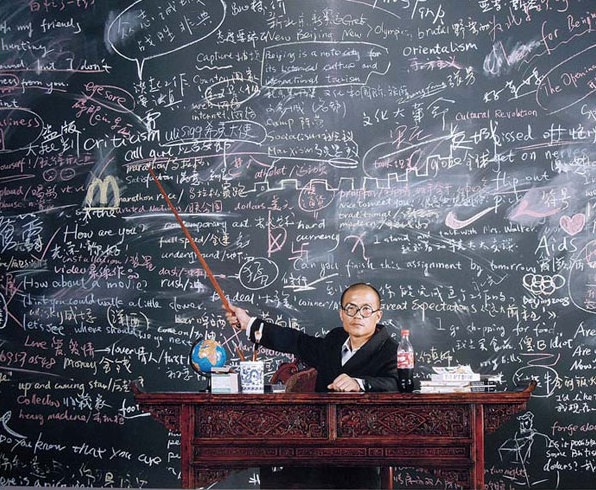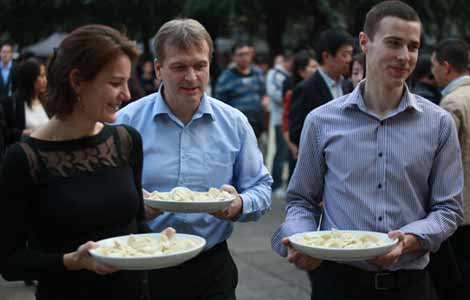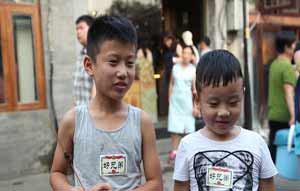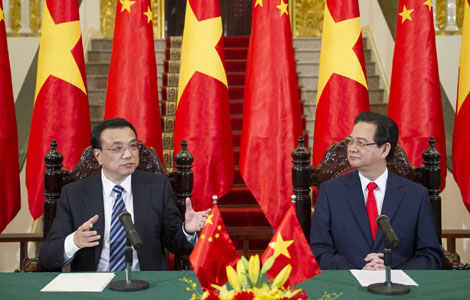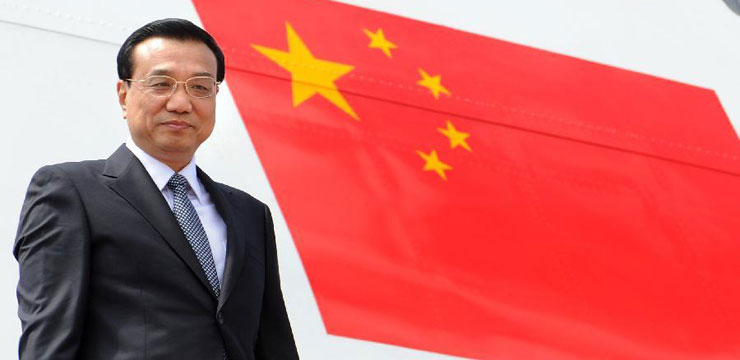Chinese arts travel the world
Updated: 2013-10-11 07:48
By Harvey Dzodin in Istanbul (China Daily)
|
||||||||
Istanbul, former capital of the Ottoman Empire and a glorious city straddling Europe and Asia, is again hosting one of the world's most prestigious art exhibitions, the 13th Istanbul Biennial.
The event runs until Oct 20 with 88 artists exploring the theme "Mom, am I barbarian?". It examines dichotomies such as between barbarity and civilization, nature and culture, the singular and universal, and randomness and order.
In keeping with the increasing importance of China's contemporary arts, the biennale features one acclaimed Chinese artist, Wang Qingsong, and hosts a parallel activity showcasing 27 promising young Chinese artists.
Beijing-based Wang exhibited this year at the China Pavilion of the Venice Biennale. He creates detailed, staged, photographs overflowing with people and objects.
|
Works by Wang Qingsong, on display at the 13th Istanbul Biennial, are highly critical of consumerism and capitalism's influence on China's economy, culture and society. Provided to China Daily |
The artist witnessed China's transformation from a traditional society to one struggling with rapid urbanization and Westernization. His works are highly critical of consumerism and capitalism's influence on economy, culture and society.
Follow Me is one of Wang's three large prints on display taking its title from the popular CCTV English education program introduced in 1982.
"The program's significance went far beyond learning English. It helped Chinese people learn about the West and the world, just after China emerged from its closed-door policy," Wang says.
Criticizing nascent commercialism resulting from reform and opening-up, Wang constructed a large blackboard full of scribbled Chinese and English slogans, many blatantly commercial, taken mainly from China-based English textbooks.
The other two works, Follow Him and Follow You, critique China's educational system emphasizing memorization over learning.
A few minutes' walk from the main biennale site is Mimar Sinan Fine Arts University, Turkey's equivalent of China's Central Academy of Fine Arts.
The China Young Artists Project group exhibition is on display there featuring 27 of China's most promising young artists.
CYAP is the only Chinese organization to host a listed parallel exhibition during the biennale.
Titled Color Temperature, this marks a critical step into the world art arena since CYAP's establishment in 2012. In addition to Chinese curator Jia Fangzhou, CYAP invited Turkish curator Hakan Gursoytrak to select several young Turkish artists' works to build an East-West cultural bridge.
In 2014 CYAP will host a reciprocal show of Turkish and Chinese artists in Beijing.
CYAP's model is to select the most promising young Chinese artists by a jury of distinguished art leaders and to professionally introduce the young talents to high-level audiences at home and abroad. Since artists need to concentrate on making art, CYAP frees them by providing initial marketing and public relations counsel.
"The journey of these artists has just begun. In many ways, they are far from mature, however, in capturing the realities of the present and the emergence of the personalization of art, each one demonstrates his or her own independent creative spirit," says CYAP founder Dong Yi.
CYAP works not only to discover and support the country's new generation of young artists, but to stimulate creativity, establish new cultural values, organize larger, more global events, and build support with media and other promotional outlets.
Curator Jia says: "To appreciate this exhibition titled Color Temperature, one needs to know that the Chinese character for temperature wen has multiple positive additional emotional meanings like warmth and caring.
"So this exhibition is about the relationship between colors and the emotional temperatures they generate in the mind's eye of the viewer. Since viewers' life experiences color their perceptions, combinations are infinite."
Some of the most interesting works include The Female Characters, a multimedia installation by Hunan artist Tao Aimin. It concentrates on women's traditional chores through washboards and evokes the now-extinct secret language of women.
The other attractive pieces are Nyushu; Double Seats, a whimsical oil painting in Western style from the imagination of northeast female artist Geng Yini whose pet pig charmed everyone who viewed it; and The Fall by Chen Langmu, a dark surreal oil painting with the skeleton of a crashed small plane being viewed by a skeletal couple on a motorcycle modeled from metal model toys in his studio.
The venue of the exhibition is no accident because the venerable 130-year-old art academy has an affinity for Chinese culture.
In 2012, it hosted the exhibition Colors of Dunhuang during the Year of Chinese Culture in Turkey. It recently established a new department of Chinese language and literature.
China Daily
(China Daily 10/11/2013 page18)

 Victoria Beckham S/S 2014 presented during NYFW
Victoria Beckham S/S 2014 presented during NYFW
 'Despicable' minions upset Depp's 'Lone Ranger' at box office
'Despicable' minions upset Depp's 'Lone Ranger' at box office
 'Taken 2' grabs movie box office crown
'Taken 2' grabs movie box office crown
 Rihanna's 'Diamonds' tops UK pop chart
Rihanna's 'Diamonds' tops UK pop chart
 Fans get look at vintage Rolling Stones
Fans get look at vintage Rolling Stones
 Celebrities attend Power of Women event
Celebrities attend Power of Women event
 Ang Lee breaks 'every rule' to make unlikely new Life of Pi film
Ang Lee breaks 'every rule' to make unlikely new Life of Pi film
 Rihanna almost thrown out of nightclub
Rihanna almost thrown out of nightclub
Most Viewed
Editor's Picks
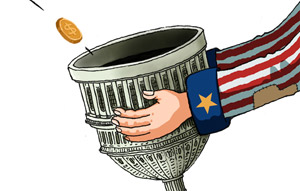
|

|

|

|

|

|
Today's Top News
Going green can make good money sense
Senate leader 'confident' fiscal crisis can be averted
China's Sept CPI rose 3.1%
No new findings over Arafat's death: official
Detained US citizen dies in Egypt
Investment week kicks off in Dallas
Chinese firm joins UK airport enterprise
Trending news across China
US Weekly

|

|
